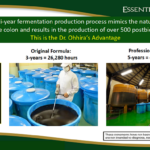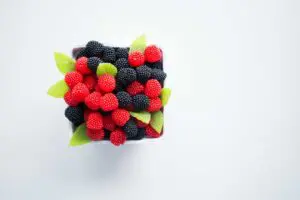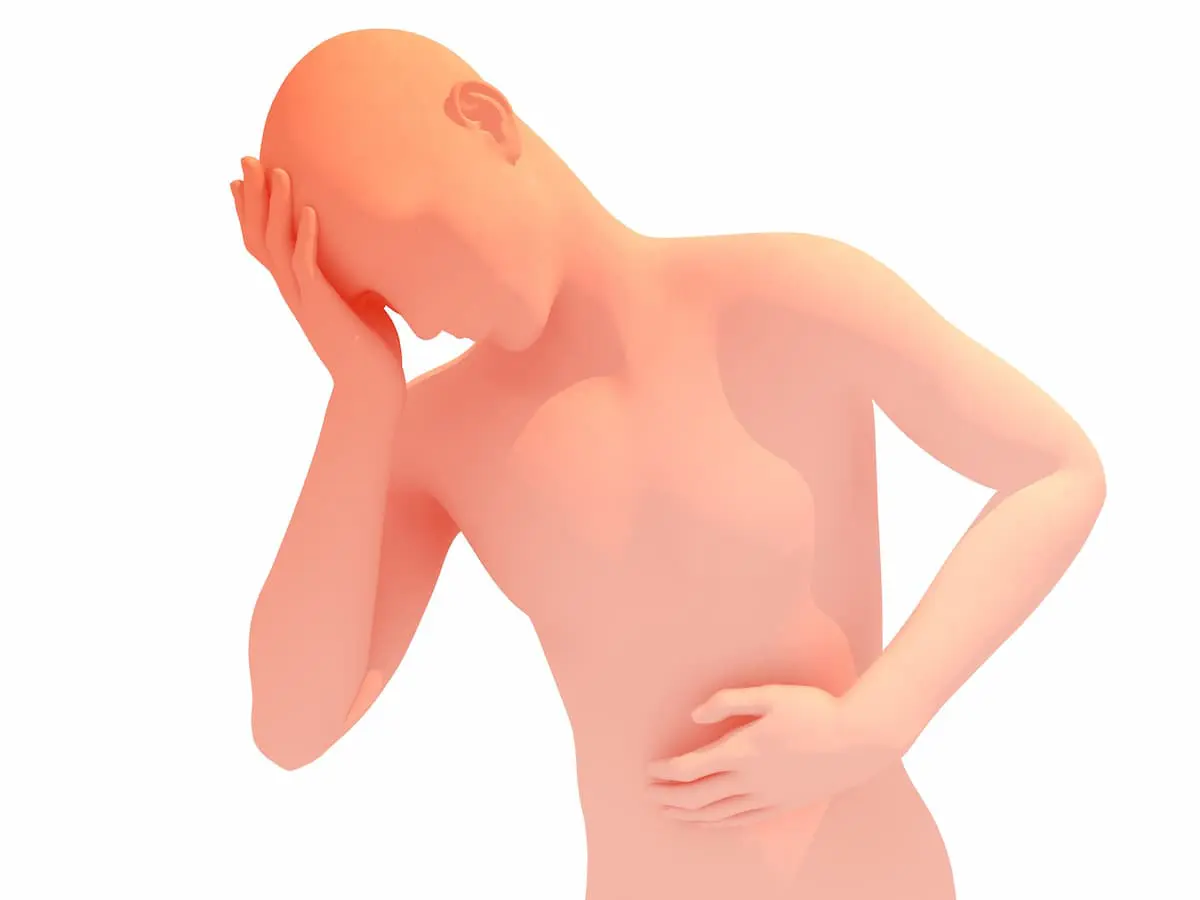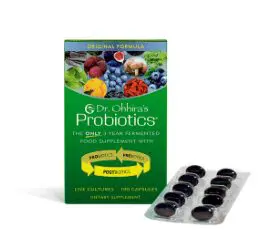Why Dr. Ohhira’s Probiotics are more effective at inducing favorable changes in the human intestinal microbiome than other orally ingested probiotics.
This article aims to provide a scientific explanation for why many probiotics are ineffective when taken orally. The oral probiotic industry in the United States was estimated to be $17.4 billion in 2022. Unfortunately, most of these products do not provide the benefits people think they do. Here’s why.
Dilemma #1: Stomach Acid: Cells in the stomach’s lining secrete hydrochloric acid. Stomach acid has two primary functions: 1) to digest dietary protein and 2) to kill ingested bacteria and other potentially harmful organisms.
Stomach acid is designed to kill; it is 10,000 to 100,000 times stronger than the acidity in the rest of the intestinal tract. In addition to killing potentially harmful bacteria, most orally ingested probiotic bacteria are also killed when exposed to stomach acid. Enteric-coated and spore-based probiotics are exceptions to this rule; they can survive transit through the stomach. However, they are also likely ineffective for the reasons explained below.
Dilemma #2: The small intestine is a hostile environment for orally ingested probiotic bacteria. Intestinal fluids, especially bile acids and pancreatic enzymes, have antimicrobial activity, which reduces the viability and survivability of orally ingested probiotic bacteria in the small intestine.i
Dilemma #3: Most people are starving their probiotic bacteria. There are two basic types of foods that probiotic bacteria require: dietary fibers and polyphenols. There are six major groups of polyphenols: flavonoids, phenols, tannins, stilbenes, lignans, and curcumins. Over 8,000 polyphenols have been structurally identified. Vegetables and fruits are the best foods with polyphenols; other sources are wild seeds, legumes, herbs, coffee, tea, and spices.
Humans do not possess the enzymes required to metabolize dietary fibers. Hence, they travel unchanged throughout the digestive tract until they reach the colon, where they are the “food” for colonic probiotic bacteria. Polyphenols have a similar fate. Many are giant molecules that are poorly digested and absorbed by humans. However, they are also a major “food” group for colonic bacteria when they reach the colon.
Unfortunately, multiple studies have reported that 90-95% of American children and adults do not consume adequate amounts of dietary fiber.ii,iii Other studies have reported significant deficiencies in consuming polyphenol-rich foods. For example, one study reported that 91% of adults in the U.S. are deficient in the daily consumption of vegetables, and 88% of adults are deficient in the daily consumption of fruits.iv Another study revealed that 80% of Americans fall short in every color of phytonutrient consumption, and 88% neglect purple/blue-colored foods.v
The Diversity Dilemma: Besides not consuming an adequate quantity of dietary fibers and polyphenols, Americans overlook the importance of consuming a wide diversity of dietary fiber and polyphenol-rich foods.
Let’s compare two of the most diverse ecosystems in the world: the Amazon rainforest and the human gut microbiome. Thousands of different species of animals (insects, birds, mammals, and reptiles) reside in the Amazon, and many require different types of food for survival. A similar situation exists in the human intestinal microbiome, inhabited by hundreds of species of bacteria. Many bacteria require vastly different types of dietary fibers and polyphenols as their food supply.
Even if orally ingested probiotics successfully transit through the stomach and small intestines, they will probably not find the dietary fibers and polyphenols they require to support their survival when they arrive in the colon. This also means they will be unable to produce adequate amounts (quantity or diversity) of postbiotic metabolites required to regulate human health.
Thus, for the multiple reasons summarized above, orally ingested probiotics, containing 10s or 100s of billions of CFUs, do not deliver the benefits they are advertised to provide. Ingesting high-dose probiotics can work against maintaining balance and diversity in the intestinal microbiome.
Dr. Ohhira’s Probiotics & Postbiotic Metabolites:
Dr. Ohhira was a visionary microbiologist who created a multi-year fermentation process to produce Dr. Ohhira’s Probiotics. His fermentation system mimics the natural fermentation processes in the human colon. In both instances, bacteria break down components in food (dietary fibers & polyphenols) and convert them into minor compounds called postbiotic metabolites with a wide range of health benefits.
It takes food from 24-72 hours to pass through the human colon. This is the amount of time bacteria in the colon have to break down dietary fibers and polyphenols to produce postbiotic metabolites. However, in most people, this process is not working effectively because most people are not consuming an adequate quantity or diversity of dietary fibers and polyphenols.
Dr. Ohhira’s Probiotics Original Formula undergoes three years of fermentation, which gives the bacteria 26,280 hours to break down the foods and produce postbiotic metabolites. Dr. Ohhira’s Probiotics Professional Formula gets an additional two years of anaerobic fermentation for 43,800 hours to produce postbiotic metabolites. Consequently, each dose of Dr. Ohhira’s Probiotics contains over 500 postbiotic metabolites.
Orally ingested postbiotic metabolites successfully survive passage through the strong acid in the stomach. When they arrive in the colon, they immediately begin to exert a range of health benefits such as reducing inflammation, directly killing or suppressing the growth of pathogens, providing a source of energy, helping heal the intestinal lining, resetting the proper level of acidity, enhancing immune function, and much more.
The above-mentioned reasons are why Dr. Ohhira’s Probiotics are much more effective at inducing favorable changes in the human intestinal microbiome than orally ingested probiotics. It’s the postbiotic metabolites that do the job. That’s the Dr. Ohhira’s Advantage.

i Han S, et al. Probiotic Gastrointestinal Transit and Colonization After Oral Administration: A Long Journey. Front Cell Infect Microbiol. 2021 March 10;11:609722.
ii Quagliani D and Felt-Gunderson P. Closing America’s Fiber Intake Gap: Communication Strategies From a Food and Fiber Summit. Am J Lifestyle Med. 2016 July 7;11(1):80-85.
iii Clemens R, et al. Filling America’s fiber intake gap: summary of a roundtable to probe realistic solutions with a focus on grain-based foods. J Nutr. 2012 Jul;142(7):1390S-401S.
iv Lee-Kwan SH, et al. Disparities in State-Specific Adult Fruit and Vegetable Consumption – United States, 2015. MMWR Mort Mortal Wkly Rep. 2017 November 17;66(45):1241-1247.
v Minich DM. A Review of the Science of Colorful, Plant-Based Food and Practical Strategies for “Eating the Rainbow.” J Nutr Metab. 2019;25019:212070.






